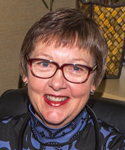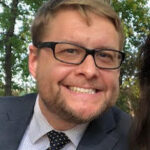Generating articles of incorporation, convening boards of directors, establishing nonprofit status: It’s no small feat to form a state rheumatology society, but with the right expertise, the results can be successful, according to the president of the Rheumatology Association of Minnesota and the Dakotas, Jody Hargrove, MD, who is in private practice with Arthritis & Rheumatology Consultants P.A. in Edina, Minn.
From Conception to Fruition
Dr. Hargrove says the idea to form a state society in Minnesota has been percolating since approximately 2005, when she first investigated the process and initiated a meeting with an attorney. Unaware of groups with expertise in society organization, unclear of how to finance it, and busy with her practice, she recalls that, at the time, the process seemed daunting and did not move forward.
The idea to form a state society resurfaced in 2015 when Eric Matteson, MD, MPH, chair of rheumatology at the Mayo Clinic in Rochester, Minn., organized a meeting of rheumatologists representing the major groups around the state. Also attending the meeting was an ACR representative, who provided insights regarding professional management companies with expertise in forming nonprofit medical societies.
There was one major discussion point before agreeing to move forward, says Dr. Hargrove: members of the formation committee were aware that some colleagues might object to taking educational grants from pharmaceutical companies. However, when the group discussed the matter, “it became really clear that we were never going to be able to form and have our first educational meeting unless we did that, because the costs involved were significantly more than reasonable membership dues would cover.” With this decision by the organizing committee, Dr. Hargrove, along with colleague Cynthia Weaver, MD, of Duluth, Minn., conducted a search of management associations. Using a management services company to steer the group through the association formation process, says Dr. Hargrove, has “been simple and seamless.” In short order the society formed, and held its first annual meeting in October 2016 with about 80 attendees. The second meeting was held in October 2017.
Strength in Numbers
The original intent was to form a Minnesota society and then invite participation by rheumatologists from the Dakotas. “The Dakotas just don’t have the numbers of rheumatologists to make forming a society reasonable,” notes Dr. Hargrove. “Even if they banded with Montana and Wyoming, they still wouldn’t have very many—and it would be as far or farther for them to travel as coming to Minnesota.”
“It became clear that it would be smarter and easier to [combine the states] right at the beginning, so we contacted colleagues in North and South Dakota. They expressed interest in being part of a society, so we formed a tri-state group from the start.” When the board of directors was formed, it included representatives from all three states.
Annual Meeting Program Variety
The lion’s share of planning for the annual meeting programs has been handled by Dr. Matteson and Gary L. Bryant, MD, FACP, a rheumatologist and associate professor of medicine at the University of Minnesota who also happens to chair the ACR’s delegation to the American Medical Association House of Delegates.
The society’s intent, as with the makeup of the board of directors, is to balance the meetings’ offerings, says Dr. Hargrove. Thus, in addition to inviting a nationally known keynote speaker (e.g., last October’s meeting featured Jonathan Kay, MD, speaking about biosimilars), meeting planners include topics that will appeal to members in academic and private practice settings. A balance of speakers from the Mayo Clinic and the University of Minnesota has also been a goal, with inclusion of case presentations by rheumatology fellows from both institutions. Speakers from private practice will also be included when available.
Eye on the Horizon
Now, with two successful annual meetings under its belt, the society can look to future challenges and opportunities. Dr. Hargrove would like to see more emphasis on advocacy and plans to form an advocacy committee that will, with guidance from the ACR’s Affiliate Society Council, consider which issues to address. “Hopefully, experiences in one state will be helpful in the others, because each state may be dealing with such issues as biosimilar legislation or step therapy at different times,” she notes.
Another goal for the society is to foster mentorship programs, targeting trainees even earlier than at the fellowship stage. Dr. Hargrove believes it’s important to start early with encouraging the rheumatology choice, “so that we can continue to have people in medicine who realize that rheumatology is exciting and changing, and we can continue to have as many rheumatologists as possible in the pipeline.”
Gretchen Henkel is an award-winning health and medical journalist based in California.



